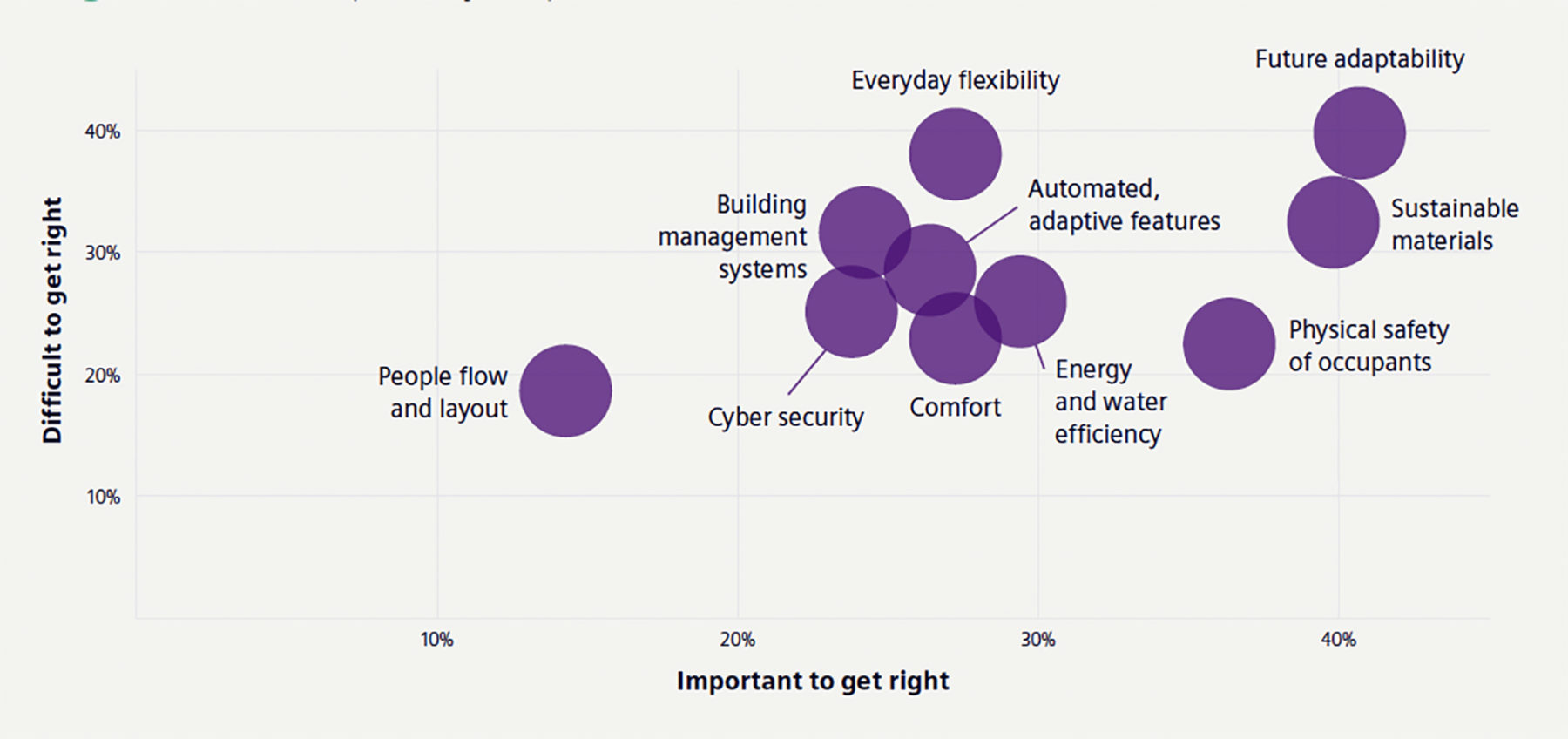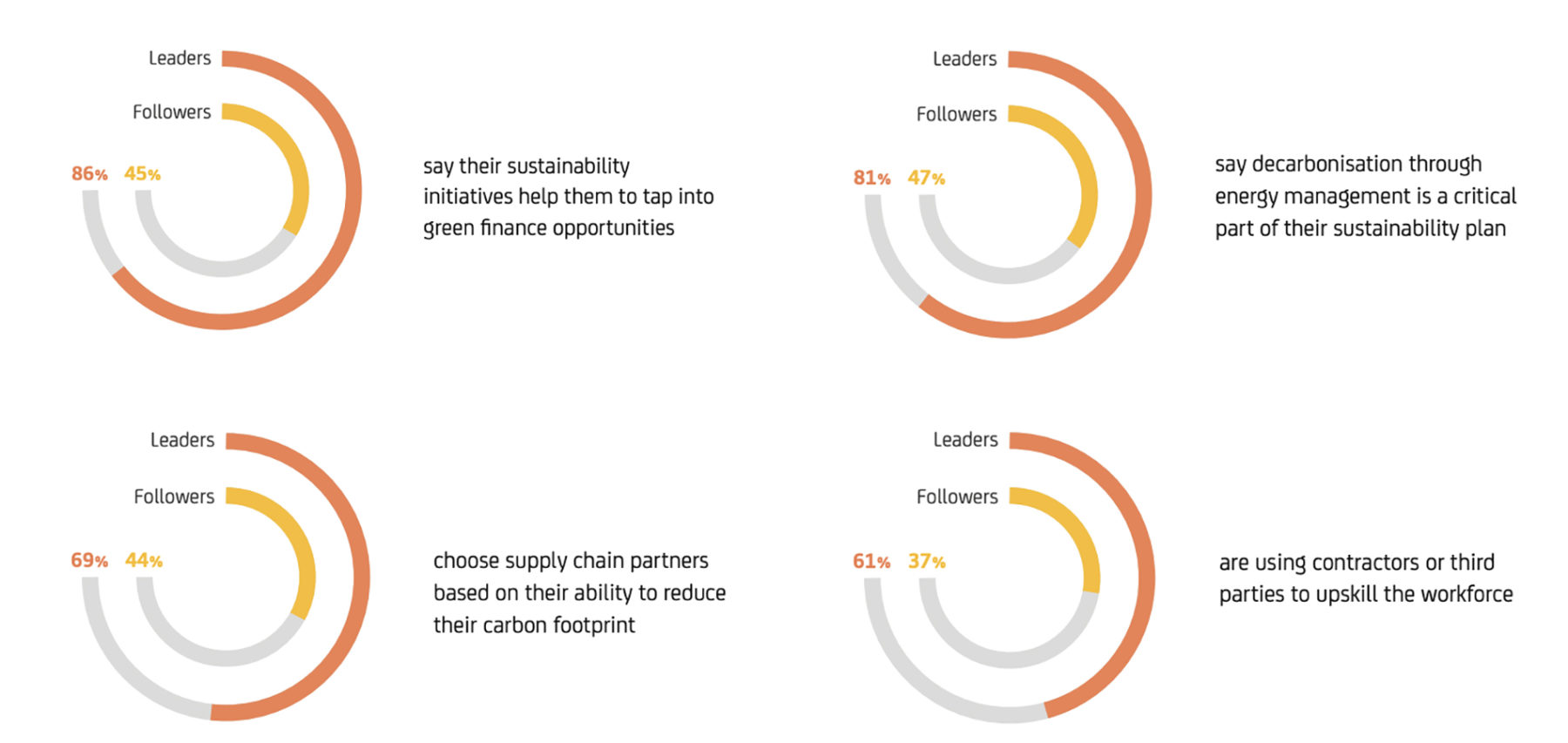From survey to headline: Five newsworthy findings and the research questions behind them
It’s not always easy to find a compelling hook for B2B campaigns, but sometimes research helps us by producing newsworthy findings. So how do we design surveys that get results?
Here, we look at headlines from five of our recent thought leadership campaigns and trace them back to the survey questions that uncovered them.
1. KPMG: 2021 CEO Outlook
The headline
More than a third of chief executives (39%) have had their health, or the health of one of their family, affected by Covid-19, and 55% of those changed their strategic response to the pandemic as a result.
How we did it
Asking ‘personal’ questions is a neglected tactic in mainstream thought leadership, but it can produce surprising insights. These kinds of questions probe people’s motivations and feelings, rather than just their rational responses to business issues, and dig a little deeper into the impact something has had on people’s lives and careers.

Why it’s different
A personal question needs to do more than just provide colour or context. In this case, we followed it with a linked question asking whether respondents who were affected by the virus changed their approach to the pandemic as a result of their experience of Covid. This gives a deeper insight into how a personal experience can shape a strategic response.
Given the growing importance of ESG issues, personal questions could become more important. Where do leaders stand on climate change, for instance? Are they sceptics or activists? And how does this affect the authenticity of their company’s response to climate challenges? Other topics that could benefit from a deeper understanding of people’s feelings and beliefs include income inequality and diversity.
Peter Elkins, group editor
2. Deloitte: Women @ Work
The headline
About half of women (51%) are less optimistic about their career prospects than they were before the pandemic, and 52% have experienced non-inclusive behaviour in the workplace.
How we did it
Deloitte’s Women @ Work campaign lifted the lid on gender equality in the workplace. Not only did it prove that the pandemic had a significant negative impact on women and their positions at work, but it also highlighted the fragility of gender equality frameworks in even the most progressive companies.
Central to the research behind the findings was the hypothesis that women are more likely to report better mental wellbeing if they work for employers that go further in providing them with career progression opportunities, an inclusive workplace culture and a positive work-life balance.
To test this, our women-only team of interviewers asked respondents questions about their mental and physical wellbeing and how it had been affected by the pandemic.
Why it’s different
A small group of women (just 4% of the sample) said they felt supported by their employers, have good career progression opportunities, and are confident to report non-inclusive behaviours. By segmenting this group, the ‘gender equality leaders’, we unearthed some striking findings. Compared with the rest of the respondents:
- Women working for gender equality leaders said they experienced better wellbeing and productivity before the pandemic
- Women working for gender equality leaders also reported higher wellbeing and productivity today
- Women working for gender equality leaders report a stronger sense of belonging and a more trusting relationship with managers
- Women who work for gender equality leaders say they plan to stay with their employer for longer.
This approach gave Deloitte a positive message and headline to offset the discouraging overarching results, and helped to generate extensive PR coverage for the firm. There was an exclusive article on NBC News, a feature segment and interview on MSNBC’s Morning Joe news programme, and an article in the Evening Standard. Women @ Work was also named Best Global PR Campaign at the 2021 Platinum PR Awards.
Faced with the so-called Great Resignation, many executives are keen to understand what motivates and inspires employees at all levels. They want actionable insights into how they can build a workplace culture that works for everyone.
Hannah Freegard, managing editor
3. Intrum: European Consumer Payment Report 2020
The headline
The Covid-19 crisis is a stark reminder of the essential role played by financial education in helping consumers to manage their money and withstand shocks.
How we did it
Created to generate media coverage for Intrum, the annual Financial Wellbeing Barometer highlights disparities in financial wellbeing among consumers across Europe. It’s a topic that has come into sharp focus in the wake of Covid-19, as some households struggle with money and financial wellbeing continues to decline.
The survey of 24,000 consumers assessed individuals across 24 European markets against four pillars designed to compare and track financial wellbeing. As well as providing a score for each of those pillars, an overall ‘Financial Wellbeing Score’ summarises the pillars, and provides a way to compare countries.
Why it’s different
We arrived at these two stats through several data points. First, we explored consumer confidence in the economy and tried to understand what was worrying them. In other parts of the survey, we tested consumers’ financial literacy — for example, by asking them to calculate how a bank’s interest rate would affect savings over time.
We found that there were several blind spots, particularly around inflation. The challenges were significantly greater in some countries and age groups than others. This all served as a reminder of how financial education can support consumers during the economic recovery from the crisis.
Piers Tomlinson, deputy editorial director
Our focus on financial literacy and confidence and how they differ country by country didn’t just give the story a more human angle — it also gave the media some good hooks. The campaign received more than 700 pieces of media coverage, including articles in Bloomberg and the Financial Times.
4. Siemens: A New Space Race
The headline
Future adaptability is both the most important and most difficult area to get right in designing a new building or facility.
How we did it
One powerful survey technique that isn’t used as often as it could be is the combining of two or more questions into a single scatter plot.

Here, Siemens wanted to understand what building owners felt was most important in a new building or facility. It then wanted to correlate it with which of these issues were most difficult to get right. As the chart shows, ‘future adaptability’ is both the most important and most difficult thing to get right in new buildings. This gave Siemens its headline.
We can also use this method to create a ‘risk radar’, and other forecast-oriented findings. To do this, one survey question asks which risks are most likely to occur, and a separate question asks which risks would be most disruptive.
In the analysis, the chart helps executives quickly identify which risks are the worst kind: both highly disruptive and most likely to happen. That’s a chart that would be highly effective in the study’s key findings or press release.
Stephen Edwards, senior editor
Why it’s different
A few examples here, but the underlying approach is the same: design two separate questions with a common list of entities, but with varying scales. Once you have the data, the two questions are merged into a single scatter chart, which can highlight powerful findings.
5. Centrica: Why wait to pursue net zero?
The headline
It has become harder for 60% of UK businesses to justify spending on low-carbon energy technology in the wake of Covid-19. However, those that have taken the plunge have seen their costs fall.
How we did it
Decarbonisation puts pressure on organisations at a time when uncertainty is widespread and good financial performance is vital. Some are eager to announce and accelerate net zero targets, but are unsure about where to start.
Centrica wanted to make a case for companies to invest in becoming a sustainable business sooner rather than later. Ahead of COP26, it felt a sense of urgency to create a discussion around the importance of setting emissions targets and acting on them, while also emphasising the need for businesses to create resilience to protect their core business.
Our research helped to identify a group of companies that are proceeding with a real sense of urgency. We call them ‘leaders’ to illustrate what sustainable businesses are doing right across five key categories.
Sonja Caymaz, senior editor
Why it’s different
To find out which challenges they face, we asked survey participants to agree or disagree with the following statement on a five-point scale:
We worry about what will happen to our profitability if and when we start to reduce emissions.
We found that 56% said they worry about what will happen to their profitability if and when they start reducing emissions. But our leader group showed that this worry is largely unfounded:
- Leaders (41%) are much more likely than followers (23%) to embrace an aggressive, ‘high-risk, high-reward’ growth strategy. This is good news, because sustainability needs trendsetters that are willing to pilot and invest in new technologies and business models.
- Leaders are already trialling and implementing new technologies to reduce carbon emissions in some or all of their operations (71% compared with 25% of followers).
- 35% of leaders using new technologies across their entire organisation are already seeing many gains, compared with only 6% of followers.

These findings helped Centrica to instigate commercial conversations with new and existing clients, and they also secured significant media attention. The headline story was picked up by industry publications that framed the coverage in relation to the effects of Covid-19 on low-carbon investments, and generated significant attention for the brand and its ‘big picture’ commentary and analysis.
If you’re interested in using thought leadership research to create a headline and PR hooks for your next campaign, find out why thought leadership is one of the most effective ways to raise awareness and get brand recognition for your company in here.
Not sure what type of research is right for you? Explore seven of the best research methods to use in thought leadership and what they’re good for here.






 Back
Back

 Book a meeting
Book a meeting
 Book a meeting
Book a meeting

